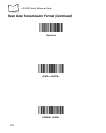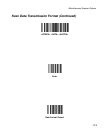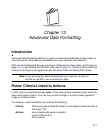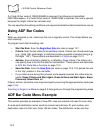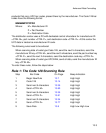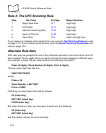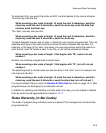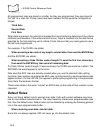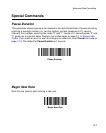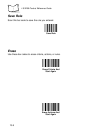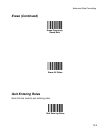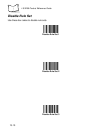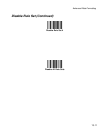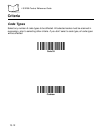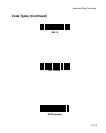
13-6
LS 9208 Product Reference Guide
All programmed rules are stored in a buffer. As they are programmed, they are stored at
the “top” of a rules list. If three rules have been created, the list would be configured as
follows:
Third Rule
Second Rule
First Rule
When data is scanned, the rules list is checked from top to bottom to determine if the criteria
matches (and therefore, if the actions should occur). Input is modified into the data format
specified by the first matching set of criteria it finds. Be sure that your most general rule is
the last one programmed.
For example, if the THIRD rule states:
When scanning a bar code of any length, send all data, then send the ENTER key.
And the SECOND rule states:
When scanning a Code 128 bar code of length 12, send the first four characters,
then send the ENTER key, then send all remaining data.
If a Code 128 bar code of length 12 were scanned, the THIRD rule would be in effect. The
SECOND rule would appear to not function.
Note also that ADF rules are actually created when you use the standard data editing
functions. Scan options are entered as ADF rules, and the hierarchy mentioned above also
applies to them. For the LS2108, this applies to prefix/suffix programming in the parameter
Scan Data Transmission Format.
These rules reside in the same “rule list” as ADF Rules, so the order of their creation is also
important.
Default Rules
Every unit has a default rule to send all scan data. Units with custom software may have
one or more default rules burned in. The rules hierarchy checks user programmable rules
first, then the default rules. Default rules can be disabled by entering the following general
rule in the user programmable buffer:
When receiving scan data, send all data.
Since this rule always applies, ADF will never go into the default rules.



